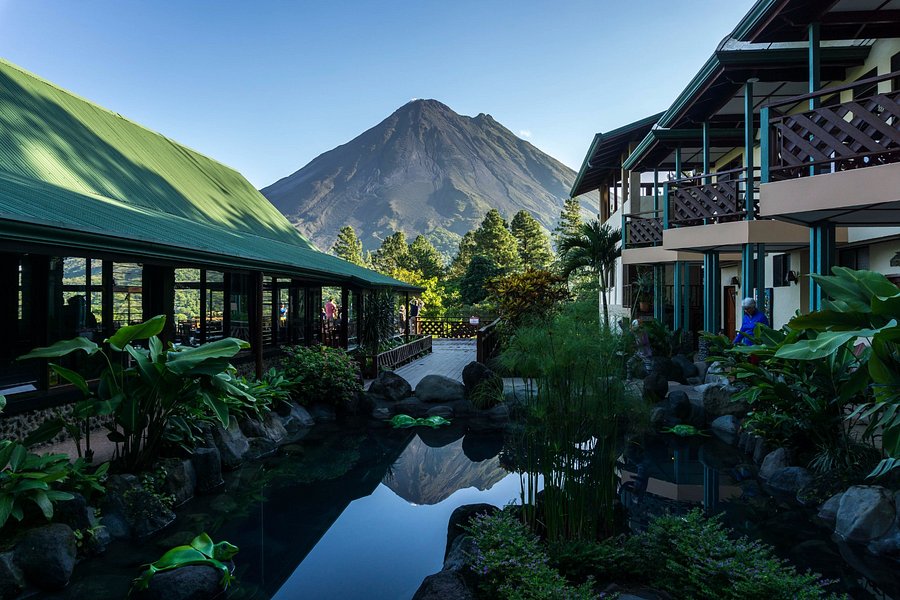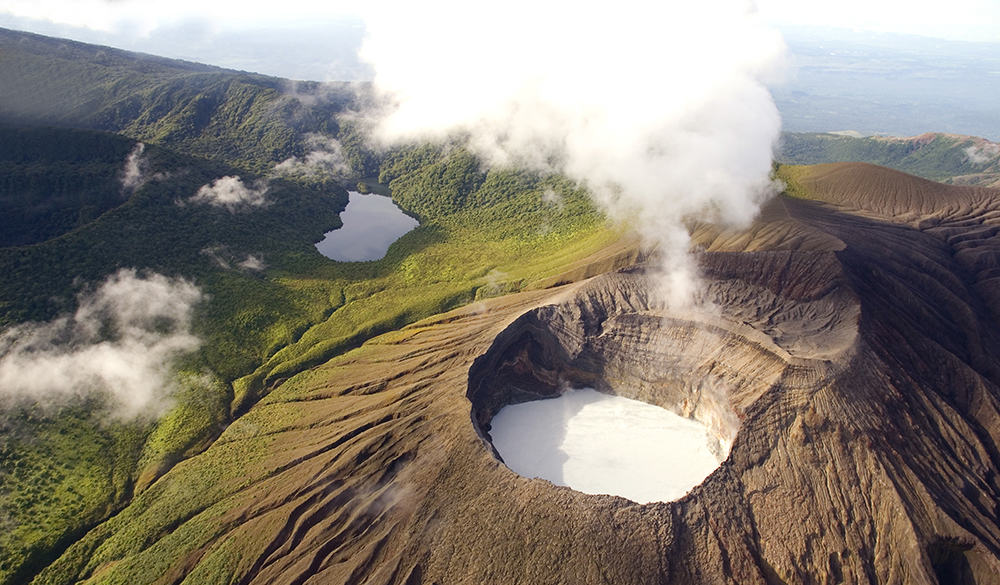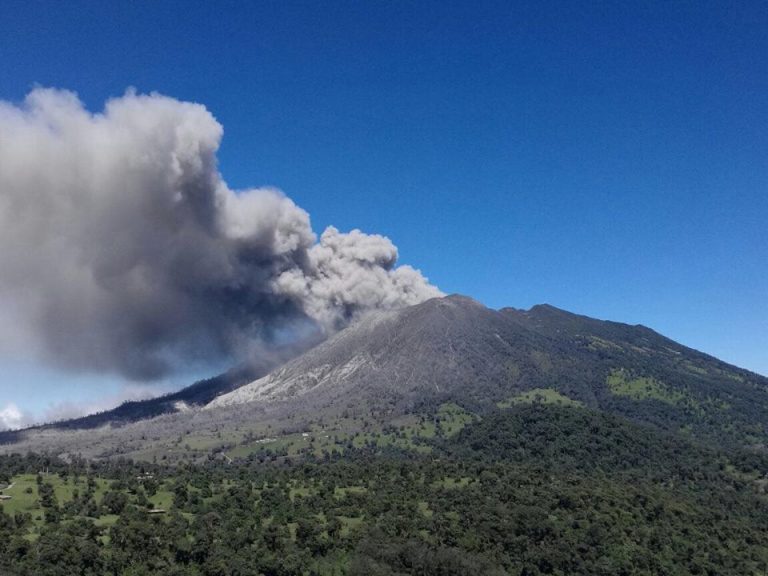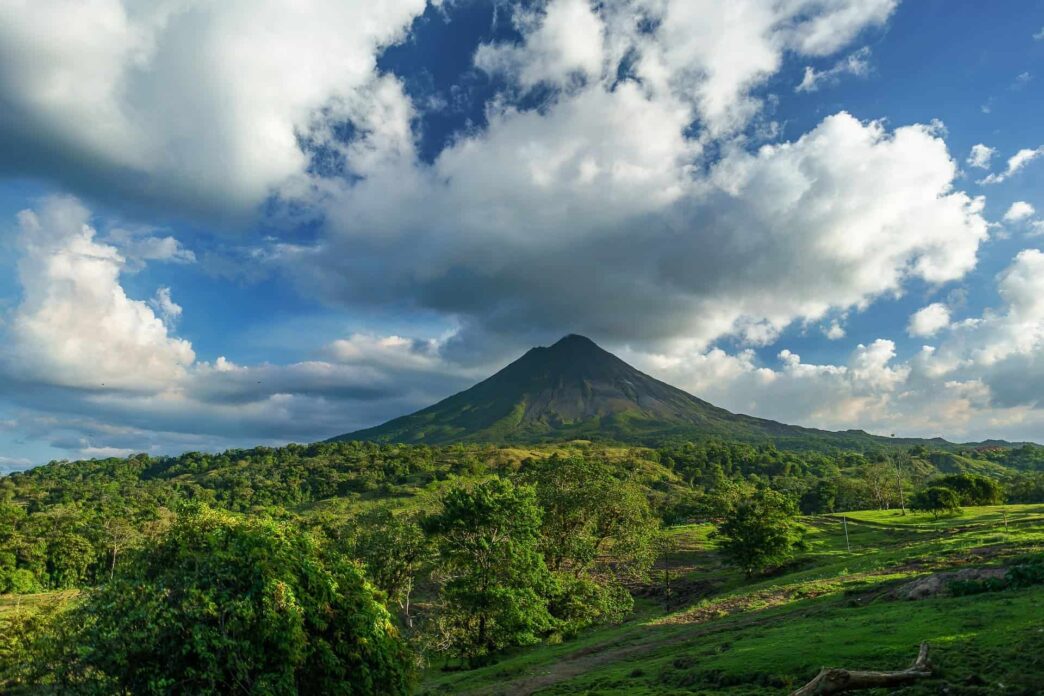
Costa Rica, a gem of Central America, is a land sculpted by fire and time. With over 200 volcanic formations, including five active giants, it’s a paradise for adventurers, nature lovers, and anyone curious about the raw power of the Earth.
Whether you’re dreaming of hiking through lush rainforests, soaking in geothermal hot springs, or gazing into a steaming crater, Costa Rica’s volcanoes deliver experiences that linger long after you’ve left. In this guide, we’ll dive into the seven best volcanoes to visit—Irazu, Poas, Rincon de la Vieja, Barva, Tenorio, Turrialba, and Arenal—offering insider tips, practical advice, and everything you need to plan an unforgettable trip.
Why Visit Costa Rica’s Volcanoes?
Nestled along the Central American Volcanic Arc, Costa Rica boasts some of the world’s most accessible and diverse volcanoes. These natural wonders aren’t just geological marvels; they’re gateways to adventure. From the turquoise crater lakes of Poas to the bubbling mud pots of Rincon de la Vieja, each volcano has its own personality. They offer hiking trails, wildlife spotting, and cultural stories, all wrapped in the country’s signature “Pura Vida” vibe. Plus, with recent safety upgrades and improved access, 2025 is a fantastic time to explore these fiery landmarks.
Let’s explore each volcano, blending breathtaking sights with practical know-how to help you decide which ones to visit.
The 7 Best Volcanoes to See in Costa Rica
1. Irazu Volcano: The Sky-High Colossus
Towering at 11,260 feet, Irazu Volcano is Costa Rica’s tallest active volcano, earning its nickname “El Coloso” for its dramatic eruptions in the 1960s that dusted San Jose with ash. Located in the Central Valley near Cartago, it’s a breeze to reach from the capital, making it perfect for a day trip. On clear days, you might catch a rare glimpse of both the Pacific and Atlantic Oceans from the summit—a bucket-list moment.
Irazu’s main draw is its otherworldly crater, home to a green-tinted lake that shifts hues with the weather. The Diego de la Haya crater, smaller but equally mesmerizing, adds to the lunar-like landscape. The surrounding Irazu Volcano National Park spans 5,705 acres of montane forest, where you can spot unique flora and fauna, like the vibrant quetzal bird.
Planning Your Visit
Getting to Irazu is straightforward—take a scenic 1.5-hour drive from San Jose or hop on a guided tour. The park is open daily from 8:00 AM to 3:30 PM, with a $15 entry fee for adults. Arrive early to beat the clouds that often roll in by mid-morning. The road to the summit is well-paved, and a short walk from the parking lot leads to the crater’s edge, making it accessible for most fitness levels. Pack a jacket, as temperatures can dip below freezing at the summit, and bring sunscreen for the high-altitude rays.
2. Poas Volcano: The Acidic Wonder

Just an hour from San Jose, Poas Volcano is a crowd favorite, drawing over 300,000 visitors annually to Poas Volcano National Park. Its claim to fame? One of the world’s largest active craters, stretching nearly a mile wide, cradling Laguna Caliente—a turquoise, acidic lake that bubbles with geothermal energy. The southern crater, Lake Botos, offers a serene contrast with its cool, algae-rich waters nestled in a dormant caldera.
Poas is no stranger to action, erupting 40 times since 1828. In April 2025, it made headlines with three minor eruptions in four hours, sending ash and steam skyward. Thanks to strict safety protocols, the park remains open, but visits are carefully managed to keep everyone safe.
Planning Your Visit
Poas requires planning due to its popularity and safety measures. The park is open from 8:00 AM to 3:30 PM, with a $15 adult entry fee. You must book tickets online through the SINAC website, as only 50 visitors are allowed per time slot, each limited to 20 minutes at the crater’s edge. Book early—morning slots sell out fast, especially from January to April when visibility is best. The trail to the crater is short and wheelchair-accessible, but clouds often obscure views after 10:00 AM, so prioritize an early visit.
Guided tours are a smart choice, often including transportation, tickets, and stops at nearby coffee plantations or La Paz Waterfall. Wear sturdy shoes and bring a raincoat, as the weather can shift quickly. Recent safety upgrades, like gas sensors and volcano shelters, ensure peace of mind, but check SINAC for updates, as Poas occasionally closes during heightened activity.
3. Rincon De La Vieja Volcano: The Geothermal Playground

In the sun-soaked Guanacaste province, Rincon de la Vieja Volcano feels like a step into a prehistoric world. Its name, meaning “Old Woman’s Corner,” ties to a legend of a heartbroken princess, but today, it’s all about adventure. The volcano’s active Von Seebach crater vents steam, while the surrounding national park brims with fumaroles, bubbling mud pots, and hot springs that invite relaxation after a day of exploration.
Rincon de la Vieja National Park is a biodiversity hotspot, home to spider monkeys, iguanas, and over 300 bird species. Trails like Las Pailas loop showcase volcanic wonders alongside waterfalls and forests, making it a haven for hikers and nature lovers.
Planning Your Visit
Located an hour from Liberia, Rincon de la Vieja is ideal for those staying in Guanacaste’s beach towns like Tamarindo or Playa Flamingo. The park is open Tuesday to Sunday from 8:00 AM to 3:00 PM, with a $17 entry fee. The summit is off-limits due to past activity, but trails at the base offer plenty to explore. The Las Pailas trail, a 3-mile loop, is moderately challenging and takes about 2 hours, while longer hikes to Oropendola Waterfall or Rio Negro hot springs are equally rewarding.
Full-day tours from Liberia combine hiking, hot springs, and local meals, often costing $80–$120. Bring water, sunscreen, and insect repellent, as the tropical climate can be intense. The volcano has been quiet since 2018, but trails to the crater remain closed for safety, so stick to guided paths for the best experience.
4. Barva Volcano: The Tranquil Retreat

For a quieter escape, Barva Volcano in Braulio Carrillo National Park delivers. This dormant giant, just north of San Jose, last erupted 8,000 years ago, leaving behind Laguna de Barva, a serene crater lake fringed by cloud forest. The volcano’s three hills, dubbed “Las Tres Marias,” add a whimsical touch to the landscape. Barva’s lower profile means fewer crowds, making it perfect for introspective hikers and birdwatchers hoping to spot toucans or hawks.
The nearby town of Sacramento has become a weekend getaway, offering cozy lodges and access to trails that weave through mossy forests teeming with wildlife, like sloths and tapirs.
Planning Your Visit
Barva is a 45-minute drive from San Jose, best accessed with a rental car or private driver, as public transport is limited. The park is open daily from 8:00 AM to 3:30 PM, with a $12 entry fee. Trails range from moderate to strenuous, with the 2-mile hike to Laguna de Barva taking about 1.5 hours round-trip. The terrain can be muddy, so wear hiking boots and pack snacks, as facilities are minimal.
Guided eco-tours, starting at $50, often include Barva alongside other Central Valley gems like coffee farms. With no recent activity, Barva is safe, but trails can close during heavy rain, so check weather forecasts, especially from May to November.
5. Tenorio Volcano: The Hidden Gem
Tucked between Alajuela and Guanacaste, Tenorio Volcano is a dormant beauty within Tenorio Volcano National Park, best known for the celestial blue Rio Celeste waterfall. At 6,287 feet, Tenorio’s four peaks and two craters are off-limits, but the park’s trails offer jaw-dropping views and encounters with tapirs, pumas, and vibrant orchids. The volcano’s geothermal legacy fuels hot springs, adding a soothing end to your hike.
Tenorio’s remote location keeps it less crowded, perfect for travelers craving an off-the-beaten-path experience surrounded by rainforest and cloud forest.
Planning Your Visit
Tenorio is about 2.5 hours from Liberia or 3 hours from San Jose. The park is open daily from 8:00 AM to 2:00 PM (last entry), with a $12 fee. The 4-mile Rio Celeste trail, a moderate hike, takes 3–4 hours and showcases the waterfall and turquoise river. Trails can be slippery, so bring waterproof gear and sturdy shoes.
Guided tours, around $60–$100, include transport and a naturalist guide to spot wildlife. Tenorio is stable with no activity concerns, but visitor numbers are capped to protect the ecosystem, so book tours early. The dry season (December–April) offers the best trail conditions.
6. Turrialba Volcano: The Feisty Eastern Star

Turrialba Volcano, soaring 10,958 feet in Cartago province, is Irazu’s fiery neighbor and one of Costa Rica’s most active volcanoes. Known for explosive ash eruptions, it last stirred significantly in 2017, and minor activity continues to limit summit access. Still, Turrialba Volcano National Park offers scenic trails through montane forests rich with ferns and bromeliads, plus distant views of the volcano’s three craters.
Its name, possibly from the Latin “Turris Alba” (White Tower), hints at the smoky plumes early settlers observed. Like Irazu, clear days reveal both oceans from higher vantage points, a rare treat.
Planning Your Visit
Turrialba is 2 hours from San Jose, with viewpoints accessible since reopening in December 2020. The park is open daily from 7:00 AM to 3:00 PM, with a $12 fee, but the crater trail remains closed due to ongoing degassing. The overlook trail, a 1-hour hike, offers safe views. Public buses from San Jose to Turrialba town are affordable, but a 4×4 or tour is needed for the park.
Tours, starting at $70, often pair Turrialba with Irazu for a volcanic doubleheader. Dress in layers, as the high altitude brings chilly winds. Always check OVSICORI reports for activity updates before visiting.
7. Arenal Volcano: The Iconic Beauty

Arenal Volcano, in north-central Costa Rica, is the poster child for volcanic tourism. Its near-perfect conical shape, rising 5,358 feet, dominates the La Fortuna skyline. Once erupting daily until 2010, Arenal is now dormant, but its allure endures. Arenal Volcano National Park offers trails through lava fields and rainforests, while nearby hot springs—like those at Tabacon—promise relaxation. Wildlife, from howler monkeys to toucans, thrives here, and activities like zip-lining and kayaking on Lake Arenal keep the adrenaline flowing.
Arenal’s youth—only 7,500 years old—adds to its mystique, and its 1968 eruption reshaped the region, creating a vibrant tourism hub.
Planning Your Visit
Arenal is 2.5 hours from San Jose or 1.5 hours from Liberia. The park is open daily from 8:00 AM to 4:00 PM, with a $15 fee. Trails like the 2-mile Los Heliconias loop are easy, offering volcano views, while the 1968 Lava Trail dives into eruption history. The summit is off-limits, but nearby Cerro Chato, an extinct volcano, offers a challenging 5-hour hike with a crater lake reward.
Tours range from $40 hiking trips to $150 packages with hot springs and dinner. La Fortuna’s hotels cater to all budgets, from hostels to luxury resorts. Visit during the dry season for clear views, but expect crowds—book accommodations early.
Comparing Costa Rica’s Top Volcanoes
To help you choose, here’s a table summarizing key details:
| Volcano | Location | Activity | Altitude (ft) | Entry Fee | Key Attraction | Best Time to Visit |
|---|---|---|---|---|---|---|
| Irazu | Central Valley | Active | 11,260 | $15 | Crater lake, ocean views | Jan–Apr, mornings |
| Poas | Central Valley | Active | 8,885 | $15 | Acidic crater lake | Jan–Apr, early AM |
| Rincon de la Vieja | Guanacaste | Active | 6,385 | $17 | Hot springs, mud pots | Dec–Apr |
| Barva | Central Valley | Dormant | 9,534 | $12 | Crater lake, quiet trails | Dec–Apr |
| Tenorio | Alajuela/Guanacaste | Dormant | 6,287 | $12 | Rio Celeste waterfall | Dec–Apr |
| Turrialba | Central Valley | Active | 10,958 | $12 | Scenic forests, distant views | Jan–Apr, check updates |
| Arenal | La Fortuna | Dormant | 5,358 | $15 | Conical shape, hot springs | Dec–Apr |
Insider Tips for a Volcanic Adventure
To make your trip seamless, keep these pointers in mind. First, prioritize the dry season (December–April) for better trails and clearer views, though mornings are always best to dodge clouds. Book guided tours for active volcanoes like Poas or Turrialba—they handle logistics and provide expert insights.
Pack for variable weather: layers for chilly summits, rain gear for sudden showers, and hiking boots for rugged paths. Stay updated on volcanic activity via OVSICORI or SINAC, as closures can happen without warning. Finally, combine volcano visits with nearby attractions—like La Fortuna’s waterfalls or Cartago’s historic sites—to maximize your itinerary.
Final Thoughts
Costa Rica’s volcanoes are more than geological wonders—they’re invitations to connect with nature’s raw energy. Whether you’re marveling at Irazu’s vast crater, soaking in Arenal’s hot springs, or hiking Tenorio’s turquoise trails, each offers a unique slice of Pura Vida.
With careful planning and a spirit of adventure, your volcanic journey will be the highlight of your Costa Rican escape. So, grab your hiking boots, check those park reservations, and get ready to explore the fiery heart of this incredible country.

